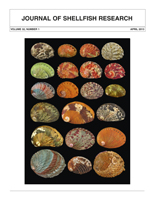A management strategy evaluation framework was used to simulate multiple populations making up a management or quota zone for Australian blacklip abalone (Haliotis rubra). The simulation was conditioned on the properties of blacklip abalone and its fishery on the east coast of Tasmania. Abalone are well known for exhibiting spatial heterogeneity in their biological properties. Each population in the simulation was represented by a size-based population dynamics model and had biological properties of growth, maturation, emergence from crypsis, and mortality specific to each population; the range of these properties varies to different degrees in the different quota zones around Tasmania. The simulation was used to compare the effects of applying different legal minimum length (LML) regulations on the fishery. Because of spatial heterogeneity in growth, a single LML within a zone has always been a compromise between underprotecting some populations and overprotecting others. The simulation was used to determine the protection afforded the overall mature biomass and the variation likely among different populations, and how these populations then responded to exploitation. In addition, when setting an LML within a zone, an analysis was made, using the simulation, of the potential trade-offs between the total allowable catch (TAC), the number of abalone needed to take that TAC, the proportion of the mature biomass protected by the LML, and the stock depletion level after fishing with different LMLs but the same TAG.
How to translate text using browser tools
1 April 2013
Legal Minimum Lengths and the Management of Abalone Fisheries
Malcolm Haddon,
Fay Helidoniotis
ACCESS THE FULL ARTICLE

Journal of Shellfish Research
Vol. 32 • No. 1
April 2013
Vol. 32 • No. 1
April 2013
Abalone
fisheries
legal-minimum-length
management
protection
spawning biomass
trade-offs




